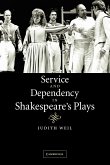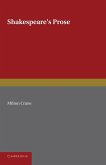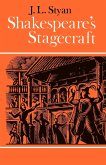Dessen investigates what a playgoer actually saw on stage at the first performance of, for example, Hamlet or Macbeth.
In this rigorous investigation of the staging of Shakespeare's plays, Alan Dessen wrestles with three linked questions: (1) what did a playgoer at the original production actually see? (2) how can we tell today? and (3) so what? His emphasis is upon images and on-stage effects (e.g. the sick-chair, early entrances, tomb scenes) easily obscured or eclipsed today. Basing his analysis on the 600 English professional plays performed before 1642, Dessen identifies a vocabulary of the theatre shared by Shakespeare, his theatrical colleagues and his playgoers, in which stage directions do not admit of neat dictionary definitions but can be glossed in terms of options and potential meanings. To explore such terms, along with various costumes and properties (keys, trees, coffins, books), is to challenge assumptions that underlie how Shakespeare is read, edited and staged today.
Review quote:
"Editors and directors (especially those about to re-create the conditions of Shakespeare's plays at the New Globe on Bankside) will ignore this book at their peril."
SEL
"More valuable than definitive conclusions is the range of staging possibilities he offers for readers and directors of Shakespeare, for he thus opens up new ways to think about stage action and provides sound reasons to think in those ways."
Grace Tiffany, Comparative Drama
"Certainly his book [Dessen] is a major resource for correcting the astigmatism, myopia, and presbyopia that are bound to afflict texts thata re four hundred or so years old."
David Bevington, Modern Philology
"Recovering Shakespeare's Theatrical Vocabulary is a very strong book...."
Philip C. McGuire, Shakespeare Quarterly
Table of contents:
Preface; Note on texts and old spelling; 1. The problem, the evidence, and the language barrier; 2. Lost in translation; 3. Interpreting without a dictionary; 4. Juxtapositions; 5. Theatrical italics; 6. Sick chairs and sick thrones; 7. Much virtue in as; 8. The vocabulary of 'place'; 9. 'Romeo opens the tomb'; 10. Vanish and vanishing; Conclusion: so what?; Notes; Plays and editions cited; Index.
In this rigorous investigation of the staging of Shakespeare's plays, Alan Dessen wrestles with three linked questions: (1) what did a playgoer at the original production actually see? (2) how can we tell today? and (3) so what? His emphasis is upon images and on-stage effects (e.g. the sick-chair, early entrances, tomb scenes) easily obscured or eclipsed today. Basing his analysis on the 600 English professional plays performed before 1642, Dessen identifies a vocabulary of the theatre shared by Shakespeare, his theatrical colleagues and his playgoers, in which stage directions do not admit of neat dictionary definitions but can be glossed in terms of options and potential meanings. To explore such terms, along with various costumes and properties (keys, trees, coffins, books), is to challenge assumptions that underlie how Shakespeare is read, edited and staged today.
Review quote:
"Editors and directors (especially those about to re-create the conditions of Shakespeare's plays at the New Globe on Bankside) will ignore this book at their peril."
SEL
"More valuable than definitive conclusions is the range of staging possibilities he offers for readers and directors of Shakespeare, for he thus opens up new ways to think about stage action and provides sound reasons to think in those ways."
Grace Tiffany, Comparative Drama
"Certainly his book [Dessen] is a major resource for correcting the astigmatism, myopia, and presbyopia that are bound to afflict texts thata re four hundred or so years old."
David Bevington, Modern Philology
"Recovering Shakespeare's Theatrical Vocabulary is a very strong book...."
Philip C. McGuire, Shakespeare Quarterly
Table of contents:
Preface; Note on texts and old spelling; 1. The problem, the evidence, and the language barrier; 2. Lost in translation; 3. Interpreting without a dictionary; 4. Juxtapositions; 5. Theatrical italics; 6. Sick chairs and sick thrones; 7. Much virtue in as; 8. The vocabulary of 'place'; 9. 'Romeo opens the tomb'; 10. Vanish and vanishing; Conclusion: so what?; Notes; Plays and editions cited; Index.









